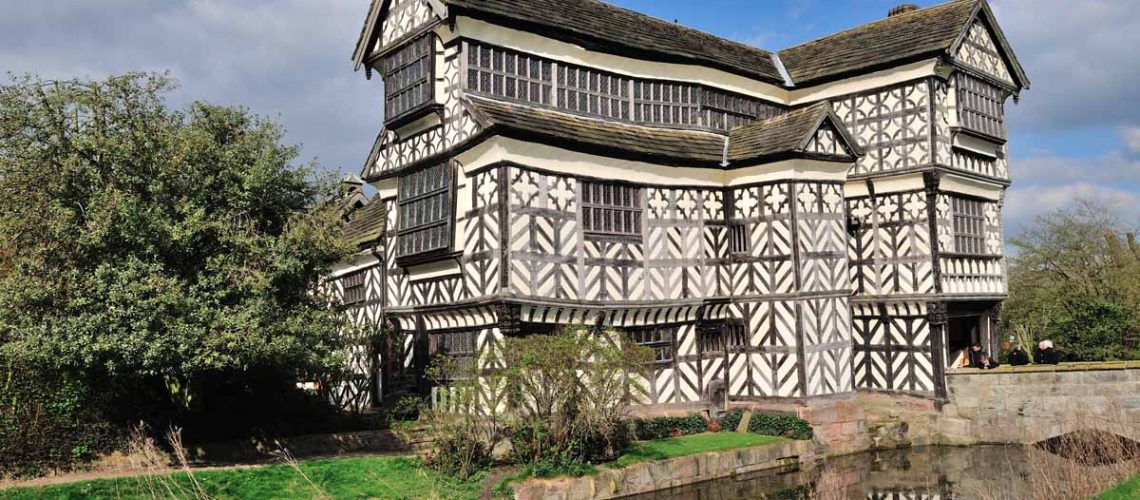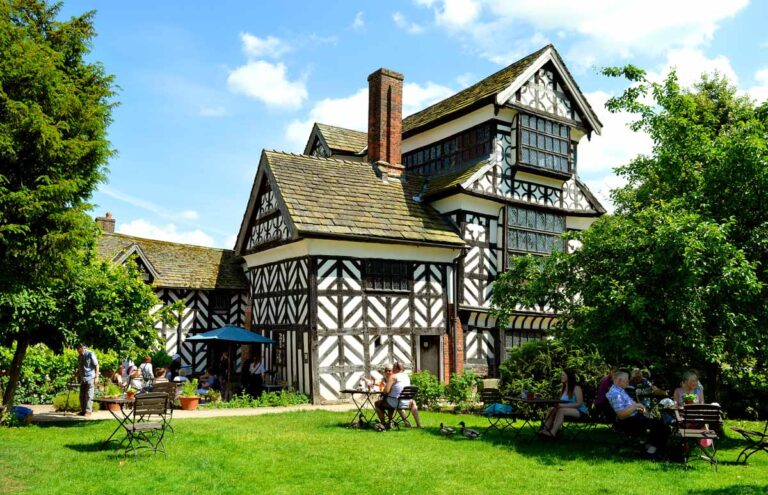


If you’re ever in the area around the town of Congleton in Cheshire, England, be sure to take a stroll up Long Lane to find Little Moreton Hall. This historic half-timbered manor house is one of the most beautiful examples of its kind in the country, and it’s been delighting visitors for centuries.
Although it’s now a popular tourist attraction, Little Moreton Hall wasn’t always in such good shape. The building had fallen into disrepair by the early 1900s, and it took some dedicated work by a team of restoration experts to bring it back to its former glory.
Let’s take a closer look at these components and find out why they were so important for the restoration of Little Moreton Hall.
Little Moreton Hall Cheshire is a historic, half-timbered moated manor house. The original house was built in the mid-15th century for the prosperous Wright family and extended later in the 16th and 17th centuries.
The house is noted for its fine collection of early Renaissance plasterwork and woodwork, as well as its cast iron gutters and pipes. In the 18th century, Little Moreton Hall was used as a farmhouse and fell into disrepair.
In 1900, the house was rescued from ruin by philanthropist Francis Barlow, and restoration work began.
The house was opened to the public in 1937.
Today, Little Moreton Hall is a popular tourist attraction, with visitors able to explore its many rooms and galleries.
The trustees and the team at Little Moreton Hall have worked tirelessly to ensure that this Grade I listed building is repaired and restored to its former glory.
The repair and restoration process has been documented on the Little Moreton Hall website, and it’s fascinating to see the technologies that have been employed, from cast iron gutters and pipes to a rainwater harvesting system.
Thorough investigations of the building were undertaken to ascertain its condition using techniques such as sound testing walls, acoustic emission, and infrared thermography, to identify potential problems and repair solutions.
Restoration works concentrated on the windows, doors, stone stairs and balustrades, and fireplaces, as well as replacing the leadwork and rainwater goods. Specialists were drafted in to assess the building and help with the recruitment and use of appropriate materials, tools, and techniques for the task.
Stone conservation was especially challenging, with the 600-year-old stonework often requiring significant reconstruction and the use of both modern and traditional skillsets.
The conservation work also extended to the surrounding gardens and the repair of the moat, bridge, and associated structures. Specialist machinery was used to rebuild the bridge and replacement stone and lime were used to help the bridge maintain its original characteristics.
The use of several modern conservation techniques was employed such as a poultice and weak acid wash to remove soiling and help preserve the stonework, as well as laser cleaning to remove graffiti, algae, and biological growth.
Repair and restoration of the timber-frame elements of Little Moreton Hall were similarly complex. The frame had to be taken down and treated both off-site, before being reassembled.
Traditional building materials such as lime, oak, and horsehair were used to replicate the repairs.
All of these repairs, combined with new features such as access paths, railings, and the ‘hanging bridge’, have been crucial in preserving the beauty and majesty of this historic gem.
It’s clear that a great deal of thought and care has gone into the renovation process, and the trustees should be commended for their efforts.
When it’s all said and done, the history of Little Moreton Hall Cheshire is a tale of triumph over adversity. The building, which has faced multiple rounds of repair and restoration over its long life, is now an icon of the British countryside. Although much of the original design is still intact, the installation of modern drainage and plumbing, and wiring were integral in preserving this incredible piece of architecture.
What makes Little Moreton Hall so special is that it has been restored to its original state without sacrificing its historical integrity. Its conservation isn’t about restoring a building for the show” it’s about keeping our cultural heritage alive and present for future generations to enjoy.
So, if you ever find yourself standing within the walls of Little Moreton Hall take a moment to appreciate the beauty before you’ll certainly be impressed by this marvel of architecture!

With a history of working with cast iron and steel components for building conservation, since 1893. Tuscan Foundry is passionate about preserving Britain’s heritage. Little Moreton Hall Cheshire is such a beautiful and unique building and we must admire the art of the effort to restore this magnificent building to its former glory.
The result? A building restored to its original splendor; a true testament to the dedication and passion for conservation projects around Britain.
“Little Moreton Hall is an incredible piece of history, and its restoration is an ongoing process.!”
If you would like further information on cast-iron rainwater goods, and cast-iron guttering in Cheshire and surrounding areas, please contact our sales office.